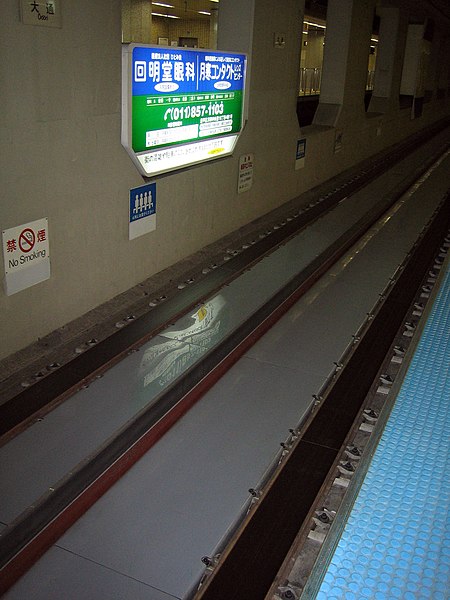Véhicule Automatique Léger
Véhicule Automatique Léger or VAL is a type of driverless (automated), rubber-tyred, medium-capacity rail transport system. The technology was developed at the Lille University of Science and Technology, was marketed by Matra, and first used in the early 1980s for the Lille Metro system, one of the world's first fully automated mass-transit rail networks, preceded only by the Port Island Line in Kobe, Japan. The VAL technology is now marketed by Siemens, which acquired Matra in the late 1990s.
VAL 206 (right) and VAL 208 (left) as used on Lille Metro.
Interior of VAL 256 with manufacturer's decal.
VAL-style track point as used on the Taipei Wenhu Line.
CityVal for Rennes Metro Line B
A rubber-tyred metro or rubber-tired metro is a form of rapid transit system that uses a mix of road and rail technology. The vehicles have wheels with rubber tires that run on rolling pads inside guide bars for traction, as well as traditional railway steel wheels with deep flanges on steel tracks for guidance through conventional switches as well as guidance in case a tyre fails. Most rubber-tyred trains are purpose-built and designed for the system on which they operate. Guided buses are sometimes referred to as 'trams on tyres', and compared to rubber-tyred metros.
5000 series central rail-guided rubber-tyred rolling stock operated by Sapporo City Transportation Bureau, Japan, and built by Kawasaki Heavy Industries Rolling Stock Company
VAL tracks on the Lille Metro
Sapporo Subway guide rail and flat steel roll ways







